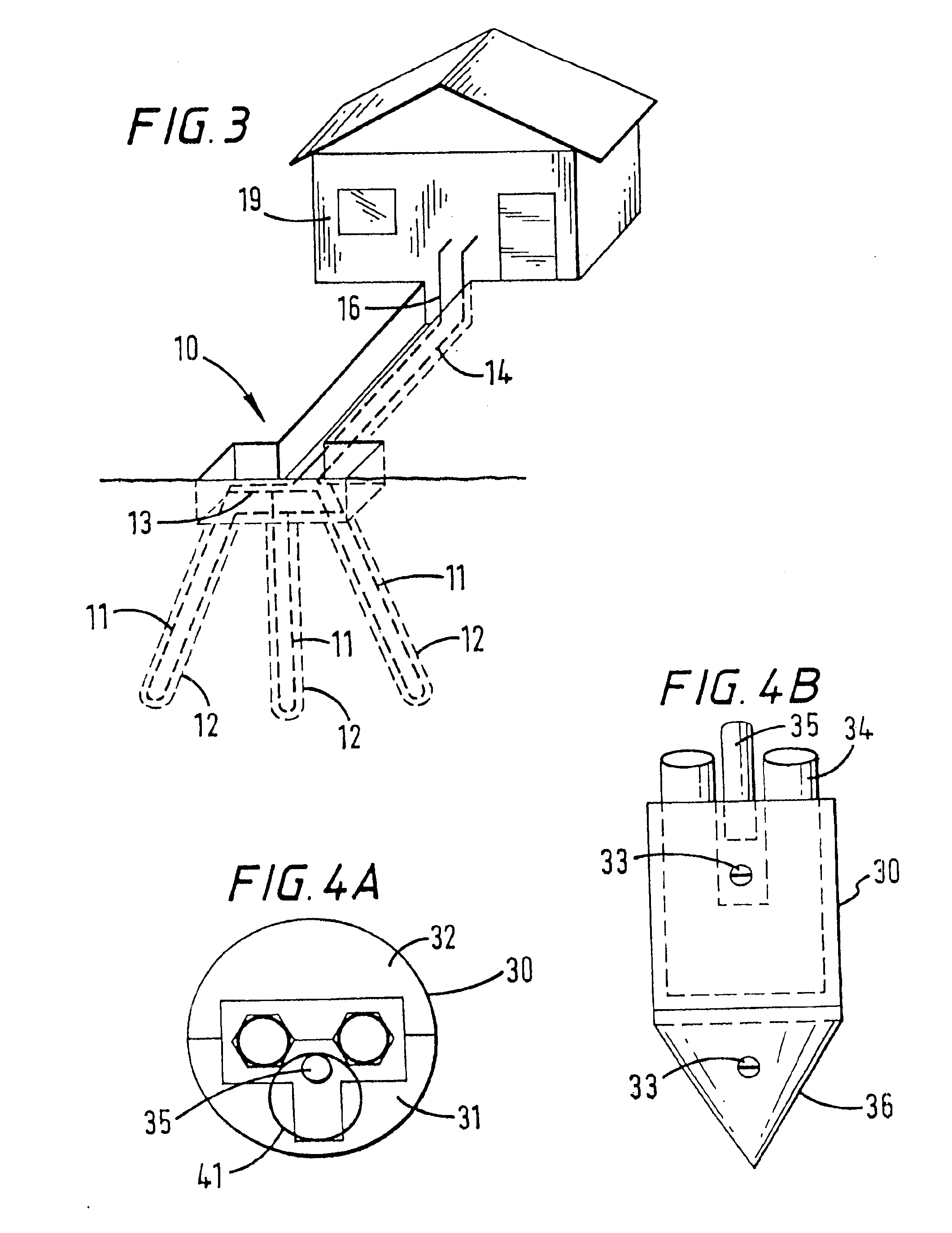Bottom member and heat loops
a bottom member and heat loop technology, applied in the field of underground heat exchange systems, can solve the problems of difficult for customers to predict the operating cost and financial payback associated with ground source installation, the cost of installing certain prior art vertical ground source heat loops can account for nearly half of the total cost incurred, and achieve the effect of facilitating system movemen
- Summary
- Abstract
- Description
- Claims
- Application Information
AI Technical Summary
Benefits of technology
Problems solved by technology
Method used
Image
Examples
Embodiment Construction
Referring now to FIG. 1, a prior art underground heat exchange pipe loop system S has a plurality of wellbores W, each e.g. about 250 feet deep and 4 to 4.5 inches in diameter, which are preferably, between about ten feet to fifteen feet apart. Water flows from a building's processing unit U in an inlet pipe I into each inlet side of a plurality of pipe heat exchange loops L and then flows up in each outlet side of the loops L to an outlet pipe O which is in fluid communication with the processing unit U. Pipes I and O are typically about 45 feet long for a three loop system as shown (preferably about ten to fifteen feet between each loop).
FIG. 2 illustrates a prior art system and method for grouting a wellbore such as the wellbores W in FIG. 1. After a pipe heat exchange loop H is installed in a wellbore B, a grout pipe T is inserted into the wellbore B. A grout pump P then pumps grout G from a reservoir R down the grout pipe T from which it flows into the wellbore B.
FIG. 3 shows a...
PUM
| Property | Measurement | Unit |
|---|---|---|
| specific gravity | aaaaa | aaaaa |
| depth | aaaaa | aaaaa |
| diameter | aaaaa | aaaaa |
Abstract
Description
Claims
Application Information
 Login to View More
Login to View More - R&D
- Intellectual Property
- Life Sciences
- Materials
- Tech Scout
- Unparalleled Data Quality
- Higher Quality Content
- 60% Fewer Hallucinations
Browse by: Latest US Patents, China's latest patents, Technical Efficacy Thesaurus, Application Domain, Technology Topic, Popular Technical Reports.
© 2025 PatSnap. All rights reserved.Legal|Privacy policy|Modern Slavery Act Transparency Statement|Sitemap|About US| Contact US: help@patsnap.com



